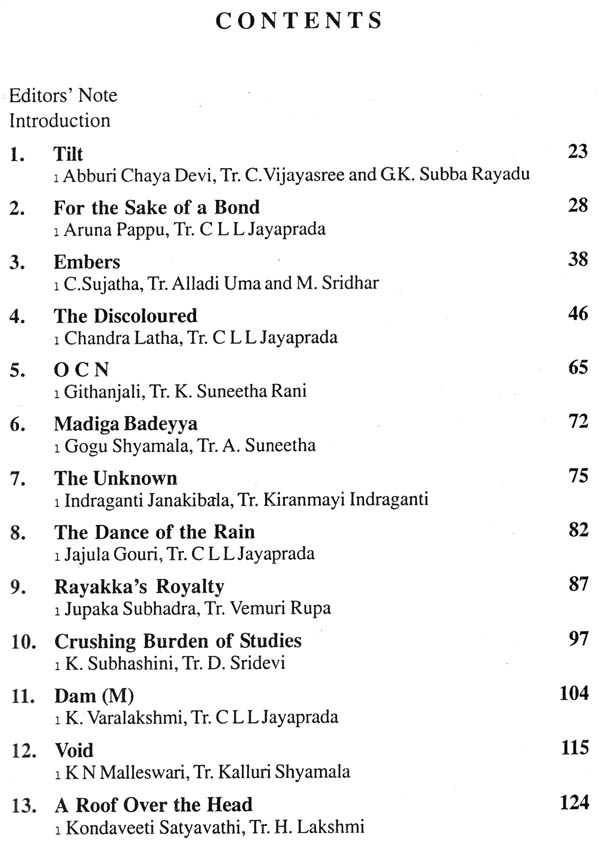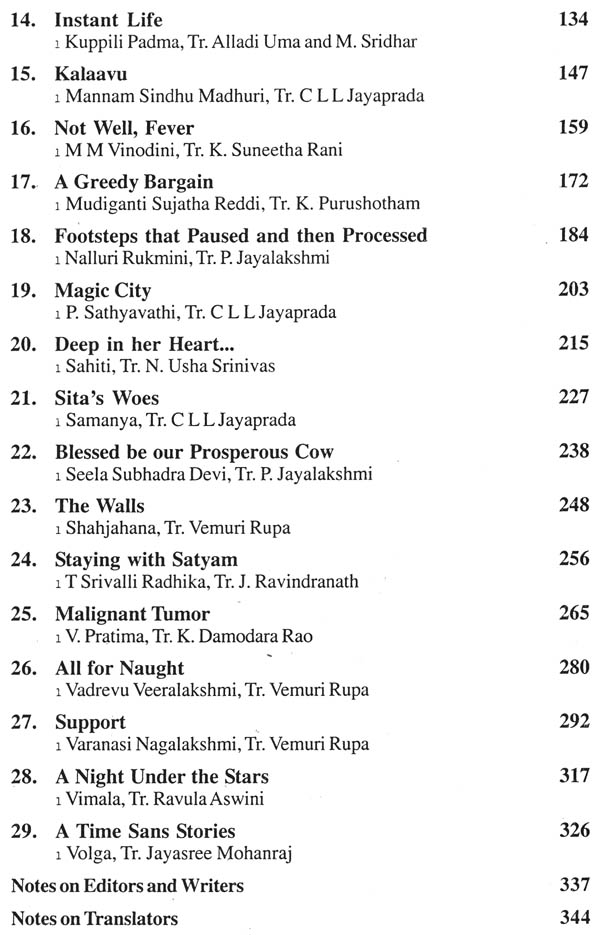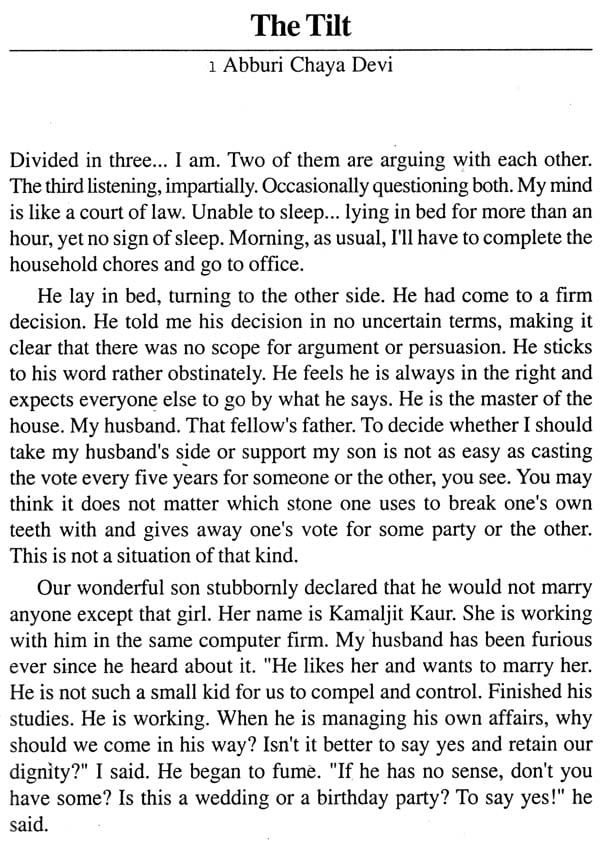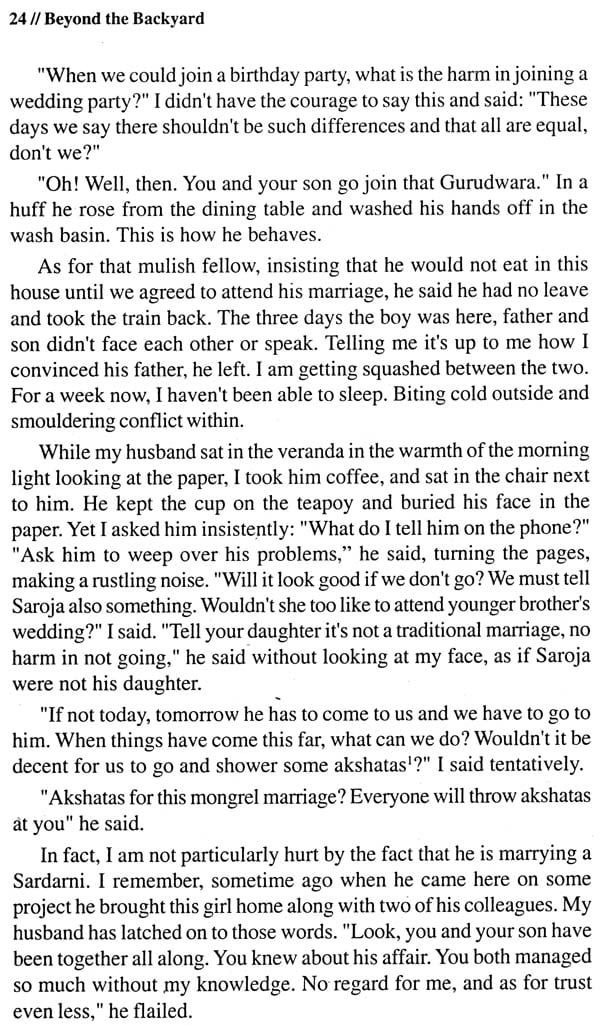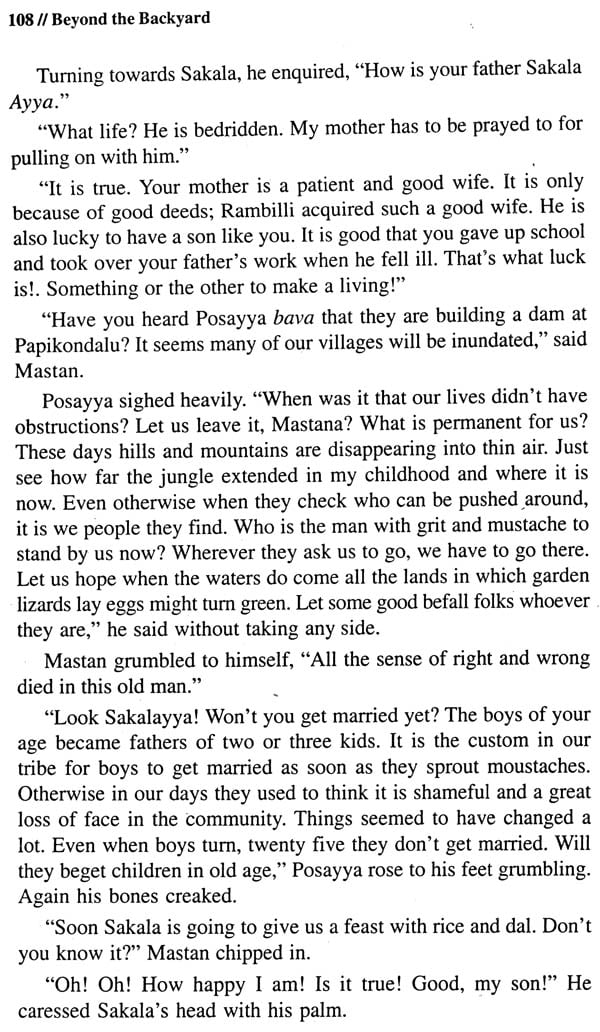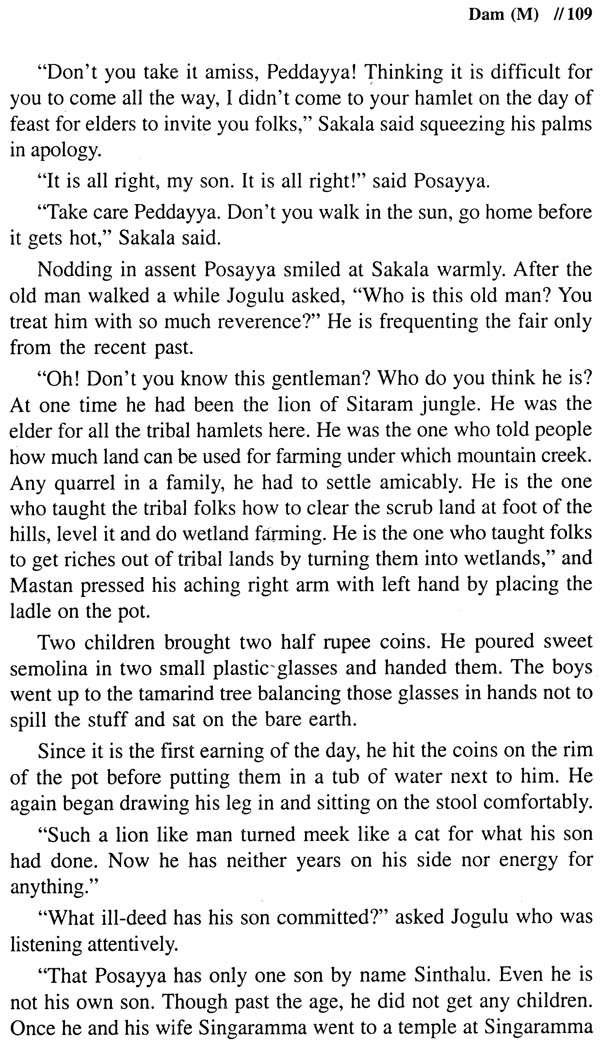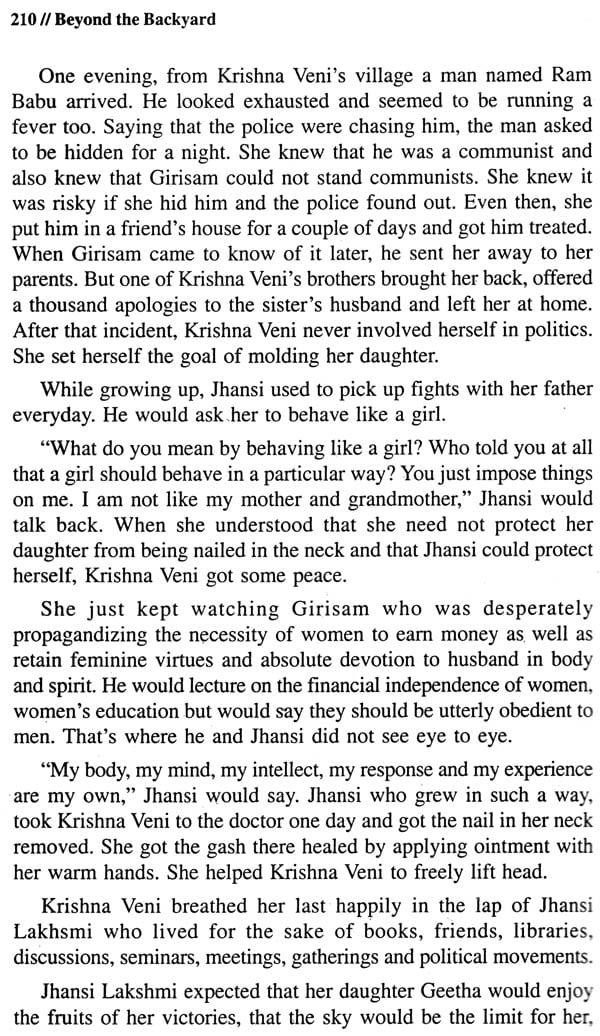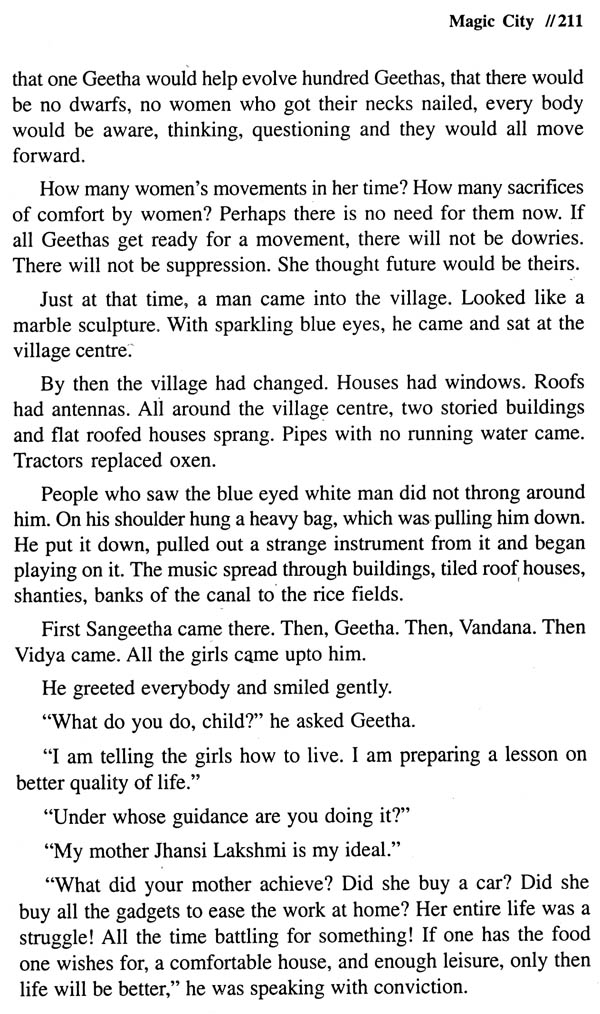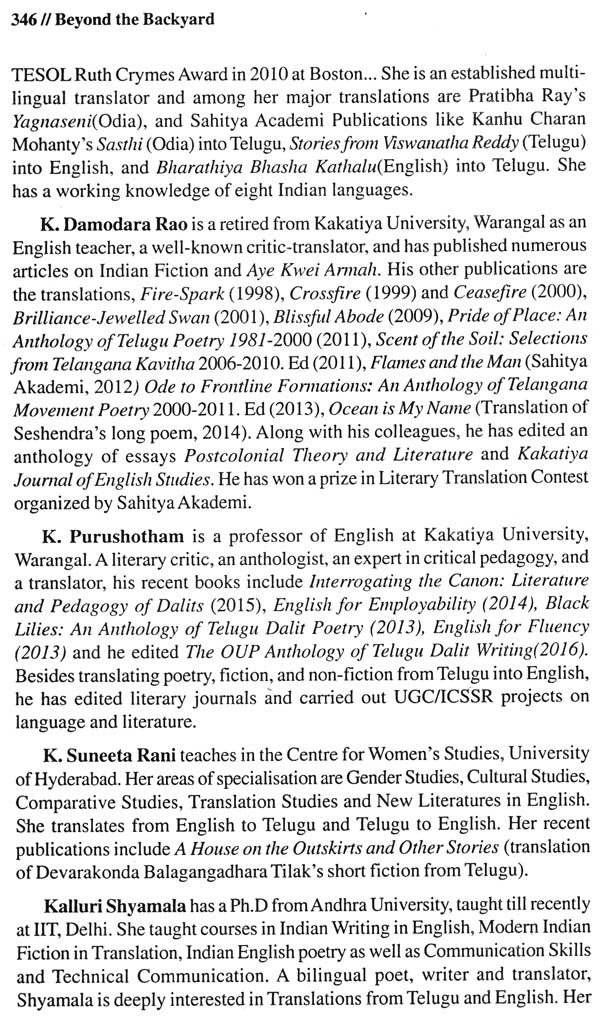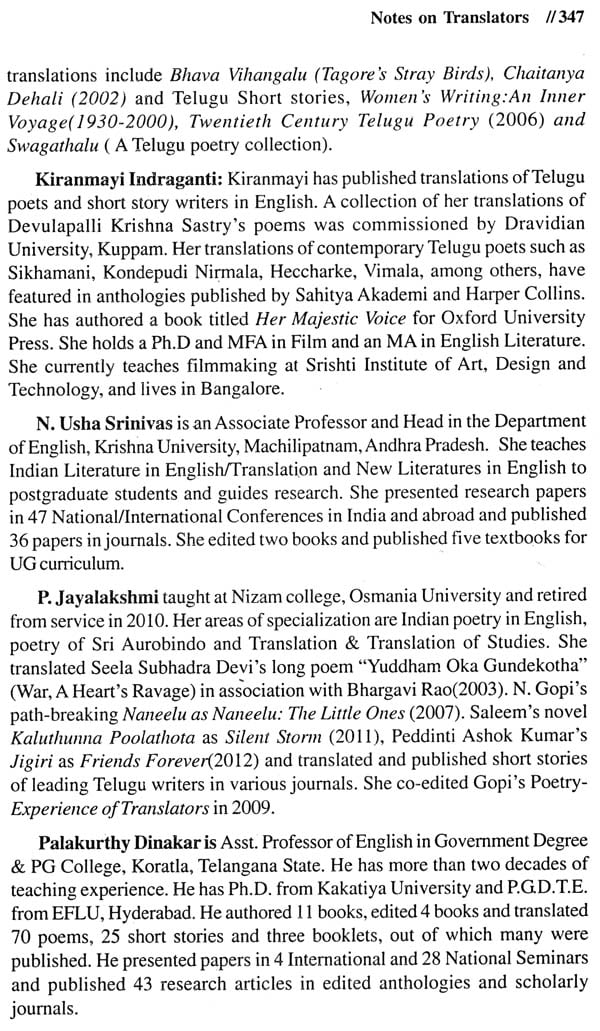
Beyond the Backyard ( Contemporary Stories )
Book Specification
| Item Code: | NAU383 |
| Author: | C.L.L. Jayaprada, P. Sathyavathi and V. Pratima |
| Publisher: | Sahithya Akademi, Chennai |
| Language: | English |
| Edition: | 2019 |
| ISBN: | 9789388468596 |
| Pages: | 348 |
| Cover: | PAPERBACK |
| Other Details | 9.00 X 6.00 inch |
| Weight | 430 gm |
Book Description
Women’s voices no longer record only women’s confinement in kitchens and backyards and their victimhood. They speak of invisible enclosures around individuals, insurmountable barriers in much widened scenarios of the world. The twenty nine short stories in this volume bring together varieties of themes, multifocal narratives, strange figures, unusual metaphors and alternative world views. Underlying is all these is a quest for a just and equitable world. No subject such as Dalit, Minority, tribal issues, farmers’ distress, newer forms of exploitation in highly technological spaces under the impact of Globalization, and existential quest escapes the pens and perception of these marvelous Telugu women writers. More than a dozen translators enthusiastically lent their creative skills to bring these rich stories to English readership. The transformation of women from victims to survivors to saviours would have been amazing if men and women, worked together to build a casteless, classless, environmental friendly society. Which Our writers aspire for..
Women’s interest and achievements in literature are not new today. But it is not so surprising that women’s victories are not recorded in literary arena in history as much as men’s were. In this context when Telugu literary world believes that Gurajada’s 1910 story "Diddubatu" is the first Telugu story, women critics claim that Bandaru Achamamba’s "Dhanathrayodasi" is the first modern Telugu short story. Bandaru Achamamba who earlier wrote Abala Saccharithra Ratna Mala (Victories of Women) is a historian of women’s awakening. In the same period a few more women are known to have written short stories about child marriages and the plight of young widows. These stories are recorded in "Diddubaatalu"’ edited by Vi.Vi.Na. Moorty.
Women’s upliftment was part of social reform movement undertaken by the 19" century national leaders. Veeresalingam Pantulu had intensely publicized the need for Women’s education and widow remarriage. In the magazines he founded Hindu Sundari and Satihita Bhodini, women’s writing was frequently published. It meant it was possible to make women literate as well as literary achievers through the social reform movement.
In the next phase, Nationalist movement influenced women in significant ways. With encouragement from Gandhi, multitudes of women participated actively and passionately in Swadeshi movement and Nationalist movement. Kanuparti Vara Lakshmamma wrote many stories on incidents in the Nationalist movement. Most important among those stories is "Jaidu Nelala Iruvadi Dinamulu" (Five months twenty days). The story is about the time her husband went to jail during the freedom movement. Vara Lakshmamma who wrote in all the genres besides short story took responsibility to gather women in groups and to educate them. The communist movement also worked for women’s uplift. There were many women activists who visited villages to enlighten women on education and health issues.
Telugu women who did creative writing in the first decade of twentieth century are just a few. After Bhandaru Achamamba, we do not find women writers who had equal output with Gurajada, Kandukuri, Sripada, Veluri and the ilk. If they are not visible it implies that their achievements were not recorded in the history. There is no evidence that women’s writing was re-published and re-circulated several times to propagate their work as was done in the case of male writers.
Around 1930 "Aa Gadi Lone" (In that Room only) by Satya Bala Sushila Devi was published in the magazine Gruha Lakshmi. Living constrained in a room, without any money in hand, with several ailments in body, unvisited by doctors, facing hardships, unable to breathe and finding relief only in death, have lived many women and the writer tells the story in a moving manner.
Socially informed male writers were not far behind in bringing women’s plight to light. Women writers are much indebted to the great revolutionist writer Chalam and socially conscious Kodavatiganti Kutumba Rao. Their concern for women’s awakening was great.
Kalyana Sundari Jagannadh’s "‘Alarasa Puttillu" which etches in all detail the story of a brother, who for the sake of just social prestige, mercilessly throws his own sister into a running river, takes pleasure in not being seen but wails in guilt at his own tragic end. Even four decades after the publication of the story, honour killings take place regularly is the epitome of women’s tragic predicament. This story is an example of KalyanaSundari’s distinct writing skill,her graphic narrative style which established her as one of the best short story writers in Telugu. R Vasundhara Devi is another noted writer of this period with a philosophical outlook and with keen power in observing human traits. She showed much interest in depicting human psyche.
We can see that most of the first generation Telugu women writers chose to write about domestic lives, aspiring for social reform.
In the next period, women writers like Uutukuru Lakshmi Kanthamma, Illindula Saraswathi Devi, K. Rama Lakshmi, Vasireddi Seetha Devi, Malathi Chandur, Nidadavolu Malathi, Achanta Sarada Devi, Thuraga Janaki Rani, Aravinda, Atchutavalli, D. Kameswari, P. Sridevi, P. Sarala Devi and P.Yasoda Reddi depicted women’s lives from multiple angles in their short stories and novels. Malathi Chandur became a house hold name with her column "Pramadavanam". Dr P. Sridevi’s novel Kalaa Theetha Vyaktulu turned out to be one of the best novels in Telugu. Vasireddi Seetha Devi’s Matti manishi is also an outstanding novel. These two novels stood the test of time while raising the consciousness of women and making a mark in Telugu literary history.
In the same period the surplus income from agriculture was invested in industries and one such industry was newspapers and their supplementary magazines. These magazines encouraged woman writers and there was a surge in novels written by women, which catered to non-serious readers.This trend was useful for both the publishers and writers. The writers won popularity while the circulation of the magazines doubled. It went on for some time until suspense thrillers written by men came to rule the roost. Hundreds of novels were published by women writers at that time but only a few stood the test of time.
